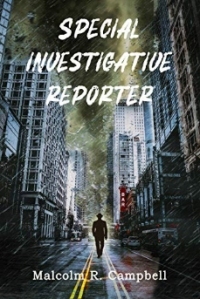Malcolm R. Campbell's Blog, page 16
December 3, 2023
‘Flowers for Algernon’ by Daniel Keyes
 “Flowers for Algernon is a short story by American author Daniel Keyes, later expanded by him into a novel and subsequently adapted for film and other media. The short story, written in 1958 and first published in the April 1959 issue of The Magazine of Fantasy & Science Fiction, won the Hugo Award for Best Short Story in 1960. The novel was published in 1966 and was joint winner of that year’s Nebula Award for Best Novel (with Babel-17).” – Wikipedia
“Flowers for Algernon is a short story by American author Daniel Keyes, later expanded by him into a novel and subsequently adapted for film and other media. The short story, written in 1958 and first published in the April 1959 issue of The Magazine of Fantasy & Science Fiction, won the Hugo Award for Best Short Story in 1960. The novel was published in 1966 and was joint winner of that year’s Nebula Award for Best Novel (with Babel-17).” – Wikipedia
The name of the Algernon character, a mouse, was inspired by the name of the English poet Algernon Charles Swinburne. The story focuses on the ethical considerations that come out of the treatment of the mentally disabled and is drawn from events from the author’s life.
 My generation studied this novel in school, but by now–with all the movies available online and via satellite TV–I suppose more people have seen the 1968 movie film “Charlie” for which Cliff Robertson won the Best Actor Oscar and for which Stirling Silliphant won the Best Screenplay Oscar.
My generation studied this novel in school, but by now–with all the movies available online and via satellite TV–I suppose more people have seen the 1968 movie film “Charlie” for which Cliff Robertson won the Best Actor Oscar and for which Stirling Silliphant won the Best Screenplay Oscar.
Wikipedia notes that “Roger Ebert gave the film three stars out of four, writing ‘The relationship between Charly (Cliff Robertson) and the girl (Claire Bloom) is handled delicately and well. She cares for him but inadequately understands the problems he’s facing. These become more serious when he passes normal IQ and moves into the genius category; his emotional development falls behind. It is this story, involving a personal crisis, which makes Charly a warm and rewarding film.'”
The American Library Association includes the novel on the list of those most frequently challenged between 1990 and 1999 because of portions that describe Charlie trying to cope with his sexual desires.
From the Publisher of the 2005 Edition
 With more than five million copies sold, Flowers for Algernon is the beloved, classic story of a mentally disabled man whose experimental quest for intelligence mirrors that of Algernon, an extraordinary lab mouse. In poignant diary entries, Charlie tells how a brain operation increases his IQ and changes his life. As the experimental procedure takes effect, Charlie’s intelligence expands until it surpasses that of the doctors who engineered his metamorphosis. The experiment seems to be a scientific breakthrough of paramount importance–until Algernon begins his sudden, unexpected deterioration. Will the same happen to Charlie?
With more than five million copies sold, Flowers for Algernon is the beloved, classic story of a mentally disabled man whose experimental quest for intelligence mirrors that of Algernon, an extraordinary lab mouse. In poignant diary entries, Charlie tells how a brain operation increases his IQ and changes his life. As the experimental procedure takes effect, Charlie’s intelligence expands until it surpasses that of the doctors who engineered his metamorphosis. The experiment seems to be a scientific breakthrough of paramount importance–until Algernon begins his sudden, unexpected deterioration. Will the same happen to Charlie?
“For lovers of Science Fiction, this story, in its original short story form was always a special kind of tour de force, a classic to be given to people you were trying to convert to the genre. Now, and regretfully, unfortunately, it has been turned into a full novel which in turn is being made into a motion picture. The idea is still unique. It’s still Charlie Gordon’s journal starting from “”progris riport 1 martch 3″”…””Dr. Strauss says I should rite down what I think and remembir and every thing that happens to me from now on.”” And it’s still the tormented story of a human being with a low intellect, who has a passion for learning and who is used as a guinea pig in an experiment designed to triple the I.Q. It is still the story of the adjustment of a man who swings from one end of the intelligence scale to the far other. But now, oh what Freudian psychoses riddle the pages of the Progress Reports. What shapely Hollywooden scenes come to view. What bastardization of what was once so beautifully put. The beginning and end seem relatively untouched and remain striking in their simplicity (the end is a real tear jerker). The middle section is saved only by the relatively few scenes with Algernon, the guinea pig mouse Charlie used to race with.”
I agree. The story began so well. And then things happened that seemed to dilute it because it lacked what it had as a short story: truth and a pure focus. I take issue with the fact that the experiment was even considered, much less done. And that, I think, is the real message of the book: do you do this or do you not do this?
–Malcolm
December 2, 2023
‘Inheritance: The Lost Bride Trilogy, Book 1’ by Nora Roberts
 Years ago when Nora Roberts had only written maybe 5,000 novels, my wife and brother’s wife used to share some of her books with me and, I had to confess, I liked them. Not the straight romance stuff, but novels more in the mystery/thriller category such as Dark Witch, Shadow Spell, and Blood Magick. At 73, she’s still churning out the books, and this new trilogy (released November 23) might just be interesting to readers of multiple genres. According to Roberts’ website, “Over the last 30 years, an average of 27 Nora Roberts books were sold every minute.” I can believe it.
Years ago when Nora Roberts had only written maybe 5,000 novels, my wife and brother’s wife used to share some of her books with me and, I had to confess, I liked them. Not the straight romance stuff, but novels more in the mystery/thriller category such as Dark Witch, Shadow Spell, and Blood Magick. At 73, she’s still churning out the books, and this new trilogy (released November 23) might just be interesting to readers of multiple genres. According to Roberts’ website, “Over the last 30 years, an average of 27 Nora Roberts books were sold every minute.” I can believe it.
“Inheritance is the first in The Lost Bride Trilogy by #1 New York Times bestselling author Nora Roberts―a tale of tragedies, loves found and lost, and a family haunted for generations.
“1806: Astrid Poole sits in her bridal clothes, overwhelmed with happiness. But before her marriage can be consummated, she is murdered, and the circle of gold torn from her finger. Her last words are a promise to Collin never to leave him…
“Graphic designer Sonya MacTavish is stunned to learn that her late father had a twin he never knew about―and that her newly discovered uncle, Collin Poole, has left her almost everything he owned, including a majestic Victorian house on the Maine coast, which the will stipulates she must live in it for at least three years. Her engagement recently broken, she sets off to find out why the boys were separated at birth―and why it was all kept secret until a genealogy website brought it to light.
“Trey, the young lawyer who greets her at the sprawling clifftop manor, notes Sonya’s unease―and acknowledges that yes, the place is haunted…but just a little. Sure enough, Sonya finds objects moved and music playing out of nowhere. She sees a painting by her father inexplicably hanging in her deceased uncle’s office, and a portrait of a woman named Astrid, whom the lawyer refers to as “the first lost bride.” It’s becoming clear that Sonya has inherited far more than a house. She has inherited a centuries-old curse, and a puzzle to be solved if there is any hope of breaking it…”
Nothing beats a centuries-old curse.
From Kirkus Reviews
 “Roberts is in fine form here. Her lush, ethereal world of ghosts and spirits is the perfect foil for Sonya’s down-to-earth, almost spartan manner. Another Roberts hallmark is on display: her continuing thematic exploration of how an individual defeats evil—not by acting alone, but by forming a community and harnessing its members’ strength and power for the coming battle.
“Roberts is in fine form here. Her lush, ethereal world of ghosts and spirits is the perfect foil for Sonya’s down-to-earth, almost spartan manner. Another Roberts hallmark is on display: her continuing thematic exploration of how an individual defeats evil—not by acting alone, but by forming a community and harnessing its members’ strength and power for the coming battle.
“Exciting launch for Roberts’ new trilogy, which promises to explore the mystical power of women to do both good and evil.”
Book Reporter notes, “Nora Roberts has crafted another story with a practical-minded female protagonist who is strong enough to grapple with the good and evil in the Poole family legacy. Her novels are well known for these quintessential battles, and this one has it all — a haunted house, a curse, secrets to uncover, and a cast of characters who are sure to charm. This reviewer can’t wait to read the next book in the series.”
–Malcolm
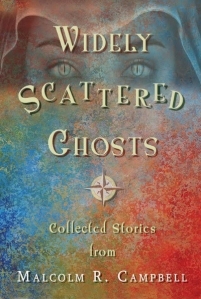 Malcolm R. Campbell often takes a walk through the paranormal.
Malcolm R. Campbell often takes a walk through the paranormal.
December 1, 2023
‘An Artist in America’ by Thomas Hart Benton
“Thomas Hart Benton (April 15, 1889 – January 19, 1975) was an American painter, muralist, and printmaker. Along with Grant Wood and John Steuart Curry, he was at the forefront of the Regionalist art movement. The fluid, sculpted figures in his paintings showed everyday people in scenes of life in the United States.” – Wikipedia
 Achelous and Hercules, a 1947 mural made for a Kansas City department store, now in the Smithsonian American Art Museum
Achelous and Hercules, a 1947 mural made for a Kansas City department store, now in the Smithsonian American Art Museum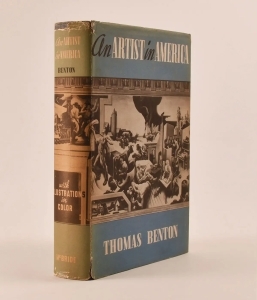 I very much like Thomas Hart Benton, especially his murals like the one shown here. One of my favorite old books on my shelves is his autobiography An Artist In America published in 1939. Sad to say, I cannot find the cover art online, but the cover shown here comes from an early edition. The cover, which shows some of his sketches, says that the book includes 64 sketches, representing “A sympathetic vigorous picture of America by one of her great artists.”
I very much like Thomas Hart Benton, especially his murals like the one shown here. One of my favorite old books on my shelves is his autobiography An Artist In America published in 1939. Sad to say, I cannot find the cover art online, but the cover shown here comes from an early edition. The cover, which shows some of his sketches, says that the book includes 64 sketches, representing “A sympathetic vigorous picture of America by one of her great artists.”
 Benton in 1935
Benton in 1935
“Controversial, flamboyant, contentious, brilliant–Thomas Hart Benton (1889-1975) was certainly all of those. Few American artists have stirred so much love and hatred as he did in a career that lasted almost seventy years. Although his painting aroused much controversy, perhaps equally as much was created by his words, for his piercing wit, profane sarcasms, and insightful condemnations were fired off without restraint. In this fiery and provocative autobiography, Benton presents an intriguing record of American art and society during his lifetime.
“The first installment of this work was published in 1937, but Benton continued his life story in chapters added to editions published in 1951 and 1968. This new edition includes seventy-six drawings that add much to his narrative, plus a foreword discussing Benton’s place in American art and an afterword covering his career after 1968, both written by art historian Matthew Baigell.
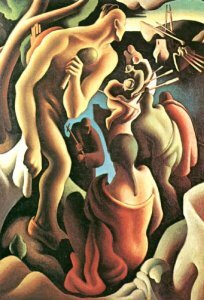 American Discovery Viewed by Native Americans
American Discovery Viewed by Native Americans
“Although Benton is most famous as a regionalist painter and muralist, his complex and fascinating career brought him into contact with many of the most important artists and thinkers of the century, including Jackson Pollock, Grant Wood, Julian Huxley, Felix Frankfurter, Eugene Debbs, John Reed, and Harry Truman. While living in New York and on Martha’s Vineyard in the 1920s and 1930s, Benton often associated with leading intellectuals and radicals. However, when his evolving principles of art led him away from an interest in Marxism, he was bitterly attacked by many of his former friends, and his account of that time reveals strikingly the fierce critical battles he faced in trying to establish his own artistic vision.
“Critics on the Left were not his only opponents, however, and equally revealing are his responses to the moral condemnations heaped on his murals done for the states of Indiana and Missouri and on his realistic nudes of the late 1930s.
“Throughout his account, from descriptions of his boyhood in southwest Missouri, his travels, and his career to discussions of specific works of art and other artists, Benton portrays people and events as vividly in words as he does in his paintings.”
November 30, 2023
George didn’t want Everest named after him
 Most of us are aware that in 2015, the Department of the Interior finally recognized “Denali” as the official name for the mountain formerly called Mount McKinley. Alaska had been calling the Peak “Denali” for forty years already. Perhaps someday the world will officially recognize the Nepalese name “Sagarmatha” as the correct name for Mount Everest (shown here).
Most of us are aware that in 2015, the Department of the Interior finally recognized “Denali” as the official name for the mountain formerly called Mount McKinley. Alaska had been calling the Peak “Denali” for forty years already. Perhaps someday the world will officially recognize the Nepalese name “Sagarmatha” as the correct name for Mount Everest (shown here).
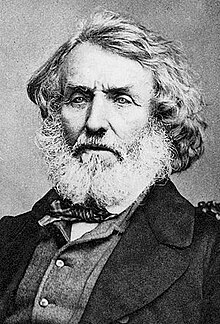 While Sir. George Everest (4 July 1790 – 1 December 1866) had more to do with Sagarmatha (Goddess of the Sky) than President McKinley had to do with Denali (as a surveyor working on the connection between Northern India and Nepal), he never saw the mountain, said the word “Everest” would be difficult for people living in the area to pronounce, and didn’t believe the mountain should carry his name.
While Sir. George Everest (4 July 1790 – 1 December 1866) had more to do with Sagarmatha (Goddess of the Sky) than President McKinley had to do with Denali (as a surveyor working on the connection between Northern India and Nepal), he never saw the mountain, said the word “Everest” would be difficult for people living in the area to pronounce, and didn’t believe the mountain should carry his name.
According to Wikipedia, “In 1865, the Royal Geographical Society renamed Peak XV – at the time only recently identified as the world’s highest peak – to Mount Everest in his honour. Andrew Scott Waugh, his protégé and successor as surveyor general, had been responsible for putting his name forward in 1856. Everest’s name was used as a compromise due to the difficulty of choosing between multiple local names for the mountain.
 K2 in the Karakoram range, while not quite as tall as Everest, is a more difficult climb and, as such, is often called the “Savage Mountain.” Estimates are that one person dies for every four who summit the mountain. It used to be referred to as “Godwin-Austen after the English surveyor. None of the possible local names seems to stand out, but “Masherbrum” or “Chogori” might one day be considered as more appropriate.
K2 in the Karakoram range, while not quite as tall as Everest, is a more difficult climb and, as such, is often called the “Savage Mountain.” Estimates are that one person dies for every four who summit the mountain. It used to be referred to as “Godwin-Austen after the English surveyor. None of the possible local names seems to stand out, but “Masherbrum” or “Chogori” might one day be considered as more appropriate.
I dearly love mountains and once thought I’d climb Sagarmatha and Chogori. The names of these peaks belong to those who live there. On recent visits to Glacier National Park in Montana where I did some climbing years ago, I was happy to see more and more native names (as rendered in English) being used. Mt. Wilbur, across the lake from Many Glacier Hotel, is finally being called “Heavy Shield,” for example.
Over time, we will (I hope) drift away from names imposed on mountains, lakes, and other geographic features from the outside instead of “naming local.”
–Malcolm
November 29, 2023
PEN AMERICA AND HIGH-PROFILE SUPPORTERS, CALL FOR RELEASE OF NARGES MOHAMMADI AHEAD OF NOBEL PEACE PRIZE AWARD CEREMONY
FOR IMMEDIATE RELEASE
November 29, 2023 Click on this graphic to sign the open letter
Click on this graphic to sign the open letter
(NEW YORK) – Hundreds of the world’s most prominent writers, artists, human rights activists, allies, and civil society organizations have signed on to an open letter created by PEN America calling for the immediate release of jailed Iranian human rights activist and writer Narges Mohammadi prior to the Nobel Peace Prize ceremony, scheduled to be held in Oslo on December 10.
“Narges’ story is one of extraordinary courage in the face of adversity, making her name synonymous with the fight for human rights in Iran. Her experience underscores the global struggles for free expression and women’s equality and serves as a stark reminder of the heavy price that dissidents and activists pay in the name of freedom and equal rights,” the PEN America open letter says.
The letter, signed by more than 250 writers and allies, including Abraham Verghese, Arundhati Roy, Azar Nafisi, Emma Thompson, George Saunders, Khaled Hosseini, John Green, Kylie Moore-Gilbert, Margaret Atwood, Mary Karr, Nazanin Boniadi, Sandra Cisneros, and Viet Thanh Nguyen; fellow Nobel Laureates Shirin Ebadi, J.M. Coetzee, and Orhan Pamuk; and at least 40 civil society organizations, including Freedom House, Frontline Defenders, Human Rights Watch, the Center for Human Rights in Iran, PEN International, and more than 30 PEN Centers from around the world. Mohammadi, the 2023 Nobel Peace Prize laureate, was honored with PEN America’s 2023 PEN/Barbey Freedom to Write Award in May.
Mohammadi, 51, is currently being held in Evin Prison, where she is serving multiple politically-motivated sentences totaling more than three decades. Over the years, she has been subject to numerous ordeals, including abusive treatment in custody, prolonged periods in solitary confinement, and enforced separation from her immediate family, including a ban on phone contact with her husband and teenage children. Mohammadi, who suffers from both heart and pulmonary issues, is regularly subjected to serious medical neglect, prompting her to undertake a 3-day hunger strike in early November after she was denied urgently needed medical care as a result of her refusal to wear a hijab.
Signatories demand Mohammadi be released before December 10 and allowed to travel to Oslo for the Nobel Peace Prize award ceremony, where she would be united with her family. The letter closes with a “call on the international community to urgently press for Narges Mohammadi’s release. It is a moral imperative to prioritize human rights over political considerations and to advocate for the freedom of those who use their voices to defy tyranny and to champion justice and equality. Narges’ continued imprisonment is not just a violation of her rights but a stark reminder of the extent of the brutal persecution still faced by political dissidents and human rights defenders in Iran and around the world today.”
November 28, 2023
‘Ghosts of Honolulu: A Japanese Spy, A Japanese American Spy Hunter, and the Untold Story of Pearl Harbor’ by Harmon and Carroll
You're currently a free subscriber. Upgrade your subscription to get access to the rest of this post and other paid-subscriber only content.
Upgrade subscriptionNovember 27, 2023
New House Rules Representatives Must Be Smarter Than Their Constituencies
 Washington, D.C., November 27, 2023, Star-Gazer News Service–On a vote of 1-0 here today, the House of Representatives has mandated that no state may send any man, woman, or pet as its representative to Congress who has a lower IQ than the average IQ of the state’s population.
Washington, D.C., November 27, 2023, Star-Gazer News Service–On a vote of 1-0 here today, the House of Representatives has mandated that no state may send any man, woman, or pet as its representative to Congress who has a lower IQ than the average IQ of the state’s population.
Immediately after the new rule was passed, half of California’s fifty-two house members were called home where they were urged to go to night school or barber college.
According to the assistant interim chairman of the House Rules Committee, Homer Simpson, “Democracy is not served by seating members who are dumb as a post based on the results of a Wechsler Adult Intelligence Scale (WAIS) test.”
According to the Department of Intelligence, most California Congressmen and Women scored between 70 and 84 on the standard test while most posts scored 85.
The American Civil Liberties Union immediately filed suit, claiming that “stupid people have rights even though nobody’s sure what they are.”
According to Simpson, California is known for passing the strangest state laws in the country, but from now on out, it will be required to keep the nonsense at home.”
 Several states have already inquired about sending fence posts as representatives since posts will almost always be smarter than the general population except in Nevada. The request is under review by the few remaining Congressmen and Women after “the big purge.”
Several states have already inquired about sending fence posts as representatives since posts will almost always be smarter than the general population except in Nevada. The request is under review by the few remaining Congressmen and Women after “the big purge.”
A White House spokesperson said that the new rules would, unfortunately, impact blue states more than red states since blue states are usually “off the deep end” when crafting meaningful legislation.
“We deserve smart people leading us even if we have to brainwash them,” Simpson said.
–Jock Stewart, Special Investigative Reporter
November 26, 2023
‘Know thyself, and thou shalt know the universe and the gods.’
 This statement, which is inscribed at the Temple of Apollo at Delphi is said to have originated with Thales of Miletus (c. 626/623 – c. 548/545 BC) who was purportedly one of the “Seven Sages” who served Apollo. He is credited with being the first philosopher to rely on natural science rather than myths and legends to explain ourselves and our world. His interests ranged from math to astronomy to engineering to meteorology.
This statement, which is inscribed at the Temple of Apollo at Delphi is said to have originated with Thales of Miletus (c. 626/623 – c. 548/545 BC) who was purportedly one of the “Seven Sages” who served Apollo. He is credited with being the first philosopher to rely on natural science rather than myths and legends to explain ourselves and our world. His interests ranged from math to astronomy to engineering to meteorology.
According to Wikipedia, Aristotle said, “ Thales thought “all things are full of gods”, i.e. lodestones had souls, because iron is attracted to them (by the force of magnetism). The same applied to amber for its capacity to generate static electricity. The reasoning for such hylozoism or organicism seems to be if something moved, then it was alive, and if it was alive, then it must have a soul. As well as gods seen in the movement caused by what came to be known as magnetism and electricity, it seems Thales also had a supreme God which structured the universe: “Thales”, says Cicero, “assures that water is the principle of all things; and that God is that Mind which shaped and created all things from water.”
Thales thought “all things are full of gods”, i.e. lodestones had souls, because iron is attracted to them (by the force of magnetism). The same applied to amber for its capacity to generate static electricity. The reasoning for such hylozoism or organicism seems to be if something moved, then it was alive, and if it was alive, then it must have a soul. As well as gods seen in the movement caused by what came to be known as magnetism and electricity, it seems Thales also had a supreme God which structured the universe: “Thales”, says Cicero, “assures that water is the principle of all things; and that God is that Mind which shaped and created all things from water.”
I’m not a philosopher, more of a shade-tree mechanic who tinkers with the simpler parts of the universe and hopes he gets the wires hooked up right. That said, I’ve never run across a more important admonition than “Know thyself, and thou shalt know the universe and the gods.” We are, I believe, the keys to the kingdom, the eyes that look out on creation and–over many lifetimes, perhaps–will grasp the importance and the meaning behind the curtain imposed on the scene by day-to-day life. Believing this is not a prideful thing, but a humbling look at what is given us to understand–when we finally learn how.
So, we begin with ourselves and look outward–or perhaps inward–from there until we are privileged to see and understand that, as the Huna mysticism of Hawai’i believes, there is nothing that is not God. Fortunately, we don’t start with the “big picture” and work our way back to ourselves. We start with us, an entity we should be able to one day understand.
So, we start with knowing ourselves. A tall order, really, but something we can fathom after years of effort. We can do his. Look in the mirror and you’ll see where the universe begins.
–Malcolm
November 25, 2023
If you weren’t a writer, what would you be?
When I’m interviewed, I dislike interviewers who don’t know anything about me and read through a list of lame questions they probably use for all writers. I won’t play that game, so I try to derail it as soon as I hear the first stupid question.
Book Blogger: If you weren’t a writer, what would you be?
Me: Lying drunk in a gutter on the south side of Chicago down where Mickelberry’s Log Cabin Restaurant used to be.
 BB: (Those who aren’t listening move on to the next question but a few rephrase the question.) No, seriously what would you be doing?
BB: (Those who aren’t listening move on to the next question but a few rephrase the question.) No, seriously what would you be doing?
Me: Working as a feature film leading man while dating Helen Mirren.
BB: Oh, wow, what a life that would have been.
Me: Helen liked it. So did I–until Liam Neeson came along.
BB: Oh, wow, so when did the writing start?
Me: When Liam Neeson came along and “Readers Digest” offered me a boatload of cash to write about who was doing it with whom in Hollywood. I used a 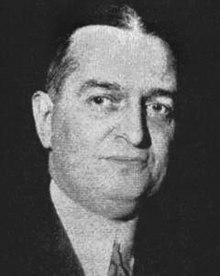 pseudonym because anyone who told that story under his own name would have ended up wherever Judge Crater ended up when he disappeared in 1930. Actually, his picture rather messes up this post, but such is life. Anyhow, nobody ever knew I wrote the “tell-all” about everyone in or near Hollywood.
pseudonym because anyone who told that story under his own name would have ended up wherever Judge Crater ended up when he disappeared in 1930. Actually, his picture rather messes up this post, but such is life. Anyhow, nobody ever knew I wrote the “tell-all” about everyone in or near Hollywood.
BB: Do you know where Judge Crater is?
Me: Dead.
I dislike the “what would you be” question because inept interviewers usually save it for writers when they would get better interview material if they asked a mobster how he got into the business. Most of the mobsters I know really wanted to teach kindergarten, but the family won out career-wise.
 Great Northern Empire Builder at Glacier Park
Great Northern Empire Builder at Glacier Park
But nobody asks the head of a funeral parlor, the desk sergeant at the local precinct, or the guys busting into the house during a home invasion what careers they wish they had. If you must know, I wanted to work for the Great Northern/Burlington Northern/BNSF railway, but that doesn’t grab as many headlines as talking about Hellen Mirren even though it’s the closest I can come to telling you the truth.
Quite likely, most of us don’t know what we’d be doing if we weren’t doing what we’re doing. So don’t ask because most of us will lie to you.
–Malcolm
November 24, 2023
I don’t have to tell you what an adze is, do I?
 In a recent episode of “The Curse of Oak Island,” a core drilling machine brought up a large piece of wood that team members said looked like it had been shaped by an adze. I was amused to see a little graphic and description of an adze as though the tool isn’t commonly known. Okay, if you were born yesterday or a few days before, you probably haven’t been allowed to use an adze. They are not as common as they were when I was young, so maybe you see “adze” as a handy word or use in a crossword puzzle or a scrabble game.
In a recent episode of “The Curse of Oak Island,” a core drilling machine brought up a large piece of wood that team members said looked like it had been shaped by an adze. I was amused to see a little graphic and description of an adze as though the tool isn’t commonly known. Okay, if you were born yesterday or a few days before, you probably haven’t been allowed to use an adze. They are not as common as they were when I was young, so maybe you see “adze” as a handy word or use in a crossword puzzle or a scrabble game.
We had at least one adze, a relatively small one about 1/4 the size as the one in the graphic, in our garage used for scraping wood when the size of the job was much too big for using a plane. The adze in the graphic might be your tool of choice if you were in Scouting and were making a canoe from scratch.
Times change so fast that I guess I shouldn’t be surprised at the tools we used years ago that a lot of people don’t use now or have never heard of. Wikipedia says that “Modern adzes are made from steel with wooden handles, and enjoy limited use: occasionally in semi-industrial areas, but particularly by “revivalists” such as those at the Colonial Williamsburg cultural center in Virginia, United States. However, the traditional adze has largely been replaced by the sawmill and the powered-plane, at least in industrialized cultures. It remains in use for some specialist crafts, for example by coopers. Adzes are also in current use by artists such as Northwest Coast American and Canadian Indigenous sculptors doing pole work, masks, and bowls.”
 When my brothers and I were little, my grandfather made things out of wood, so we were used to well-tended tools that could be found on a farm or in any woodworking operation. I’m happy to see that you can still buy an adze at Home Depot even though they are calling it a “forged hoe” though it appears when I search for “Adze.”
When my brothers and I were little, my grandfather made things out of wood, so we were used to well-tended tools that could be found on a farm or in any woodworking operation. I’m happy to see that you can still buy an adze at Home Depot even though they are calling it a “forged hoe” though it appears when I search for “Adze.”
I guess you could use it as a hoe, but that would incur my grandfather’s wrath as he shouted, “Go get a maddock.” You know what that is, right? My brothers learned early on to use tools for what they were intended rather than making do with the wrong thing–like using a wrench as a hammer.
I think I need a drink.
–Malcolm


